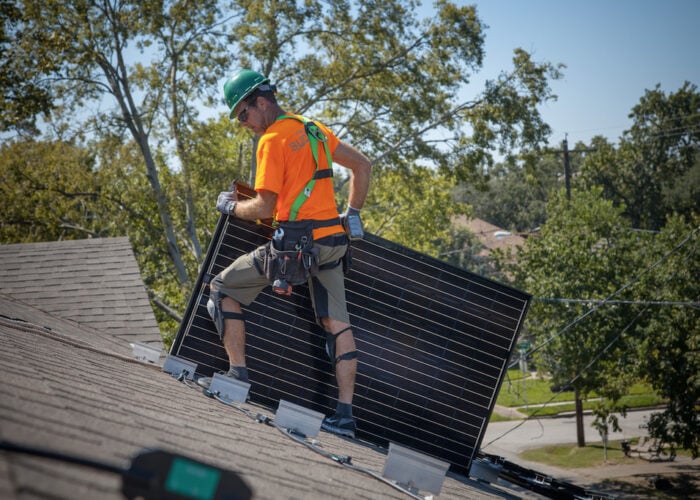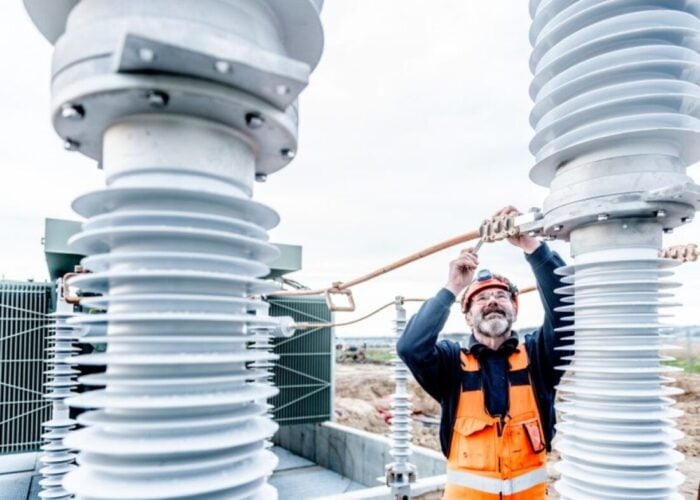Researchers from Fraunhofer Instituts für Solare Energiesysteme (ISE), Freiburg and the Carnot-Institut Laboratoire d‘électronique des technologies de l‘information (CEA-LETI) in Paris have been awarded the Franco-German Business award for their work on developing reusable substrates for III-V multi-junction solar cells.
Presented by the Franco-German Chamber of Commerce and Industry AHK, the business award is presented in recognition of best practices over the past two years. Patrons of the award are the French Minister of Economy, Finance and Industry, François Baroin and the German Federal Minister for Economics and Technology, Dr. Philipp Rösler.
Unlock unlimited access for 12 whole months of distinctive global analysis
Photovoltaics International is now included.
- Regular insight and analysis of the industry’s biggest developments
- In-depth interviews with the industry’s leading figures
- Unlimited digital access to the PV Tech Power journal catalogue
- Unlimited digital access to the Photovoltaics International journal catalogue
- Access to more than 1,000 technical papers
- Discounts on Solar Media’s portfolio of events, in-person and virtual
Multi-junction solar cells are extremely popular in large-scale solar plants, located in areas rich in sunlight, feeding power into the grid, on the grounds that they can achieve efficiencies of up to 43%. This is twice the level of conventional solar cells made of crystalline silicon. However, in these times of austerity, the manufacturing costs involved discourages the use of III-V multi-junction solar cells, but the ISE and CEA-LETI researchers assert costs will be cut by 20% through their development of reusable substrates. This will prove extremely beneficial to companies like Soitec Solar following its recent contracts in China and San Diego, US. The new solar cells will be used in its concentrator modules.
Multi-junction solar cells consist of several semiconductor layers that combine to transform the entire spectrum of sunlight into electrical energy. This technology, used in concentrator photovoltaics, employs lenses that focus the light of the sun 500 times onto tiny solar cells, producing solar electricity on a large scale. The multi-junction solar cells themselves consist of some 30 semiconductor layers built up, layer for layer, on ultra-pure crystals of germanium or gallium arsenide.
Up until now the solar cells had to remain in place atop the germanium or gallium arsenide crystals; the solar cells are now removable from the new substrate which is recycled several times.
According to Dr. Frank Dimroth, head of department III-V-epitaxy and solar cells at Fraunhofer ISE, “In the Solar-Bond project, two high-tech institutes have combined their skills. CEA-LETI is a leader in the microelectronics field and Fraunhofer ISE in photovoltaics.”
The research is divided into two groups: the French researchers develop the substrate and adapt its properties to the requirements involved in growing multi-junction solar cells; the German scientists then apply the solar cells to these substrates and process them to create ready-to-use devices.
Solarbond is one of 26 projects sponsored under the Inter Carnot Fraunhofer program. The purpose of the program – jointly run by the German Federal Ministry for Education and Research, Fraunhofer and The French National Research Agency – is to establish strategic partnerships between French and German research and industrial organizations.







